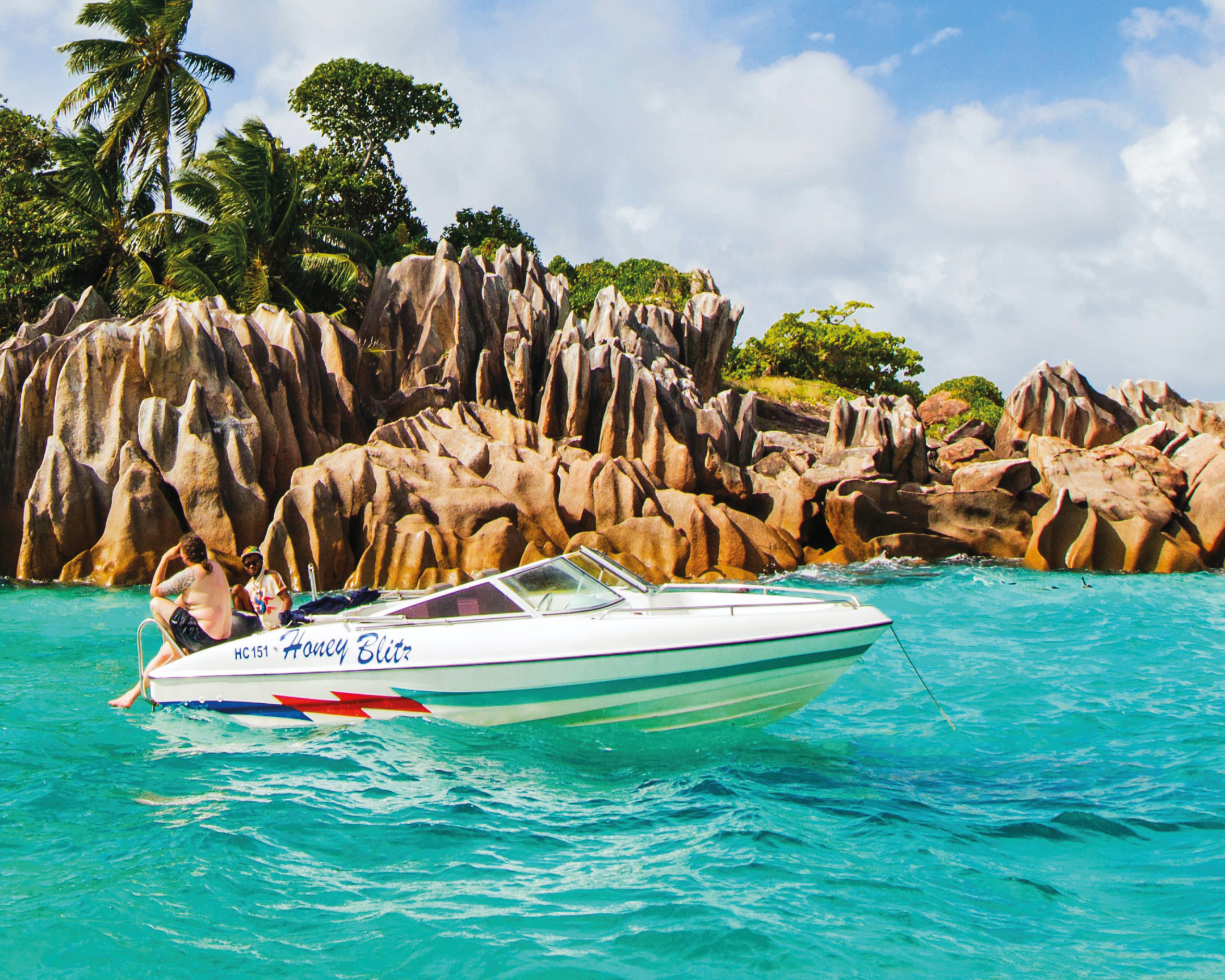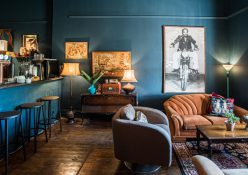People-watching is a Seychelles staple; join the parading Seychellois heading to the many seaside cafes and beachfront restaurants for caipirinhas, Seybrew beers and fresh fish off the barbecue.
Overhead, a cacophony of gossiping minor birds attract the attention of the evening strollers along Beau Vallon, Seychelles’ esplanade of choice for the smart and the sophisticated. We look up, but instead of the small noisemakers in the dense takamaka and casurina trees, a black and white performance of greater wonder is taking place. Above a layer of floating, dipping fairy terns, something bigger fills the sky. We look more carefully and identify the shapes – a battalion of enormous fruit bats, headed for Morne Seychellois National Park just north of the famous beach, out on their own sunset parade, hundreds of them, silent gliding giants. The evening show stops traffic, a special moment on a special archipelago known for its ability to deliver up the unexpected.
Choosing the Seychelles as an Indian Ocean destination is by no means an easy job; literally thousands of islands tempt millions every year, from the coral atolls of the Maldives in the north to the family-friendly Mozambique islands – Pemba, Bazaruto, Inhaca – of the south. The stars of Tanzania’s historic Zanzibar and Kenya’s marine wonderland of Lamu have also continued to rise, in no small part thanks to ongoing international investment and better communication networks. Yet it is the Seychelles that still holds a special place in many hearts, retaining an almost mythical allure. Post-pandemic, the combination of French romanticism, classically beautiful beaches, a living botanical history, carefully managed eco-systems and world-renowned resorts still has a powerful pull. The 115-island archipelago – 43 inner and 72 outer islands – have variety too; from busy Creole towns such as Victoria (the smallest capital in Africa) and a flourishing arts scene, to single resort island retreats, world-class deep-sea fishing, coral reef diving, and all within easy reach of an international airport with a wide regional footprint.
As the sun finally sets on Beau Vallon, the parading Seychellois head to the many seaside cafes and beachfront restaurants for caipirinhas, Seybrew beers, fresh fish off the barbecue and a taste of the famed Seychellois caramelised pawpaw dessert that once you’ve had, you’ll never forget. The trade winds cool the islands and in the gloaming the ocean is ridiculously beautiful, and blood temperature to boot.
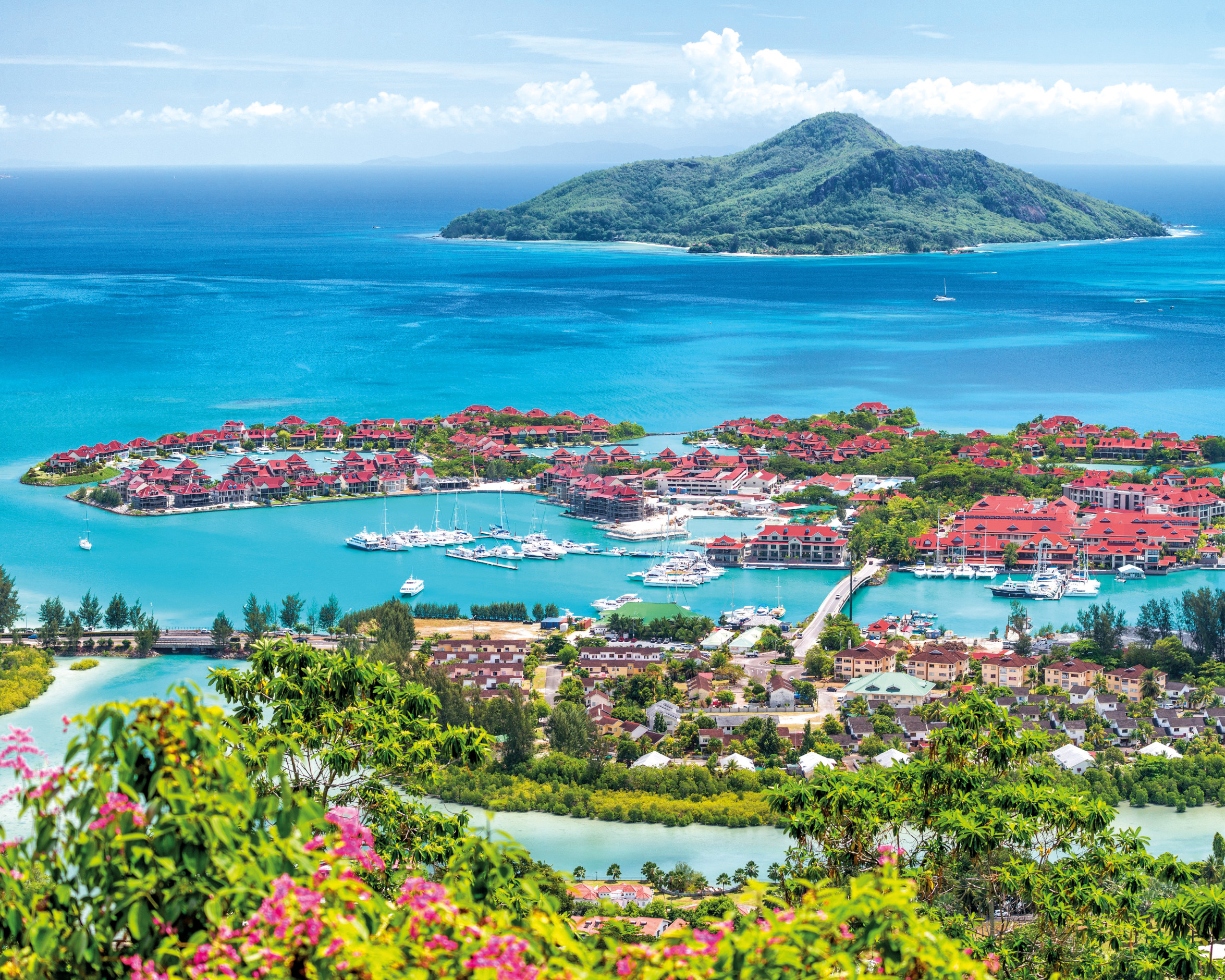
Heights of Mahé
Which island to choose as a base in the Seychelles depends on a number of things – deciding on Mahé means easy access to Seychellois culture, both contemporary and historical. Praslin is quieter and La Digue almost removed.
On Mahé, there’s much to see and do. Victoria itself is a living museum of Victorian architecture blended with later Creole influences. The French and British colonial legacies – French from 1773, British from 1903 – stand proudest at the post office, the fountains and the Queen Victoria Memorial clock tower (a miniature of Big Ben). The Creole period’s finest hour is arguably the balustraded two-storey courthouse next to the clock tower. Also in town is the Sir Selwyn Selwyn-Clarke indoor market, absolutely essential for getting a sense of real Seychellois daily life – and the astonishing bounty of the nearby seas. Trestle tables are piled with locally caught fish of every imaginable size and shape. The fruit and veg is equally impressive – there are mangos, papaya, bananas, pineapples and watermelons, sweet potatoes, peppers, christophines and carrots the size of cucumbers.
But if the hubbub of Victoria gets too much and a contrast to the golden beaches is needed, the stillness of the Morne Seychellois National Park, centred around the island’s highest peak of the same name, is the spot. Tropical jungle doesn’t begin to describe this intense oxygen factory, some 20% of the island’s total landmass. Walking paths abound, or if the humidity is too high, the main road from Victoria to Port Glaud takes travellers right through the heart of the dense green park. Crucially, it also boasts two of the most stunning beaches on Mahé, with one in the south and another smaller beach in a secluded bay, which forms part of the Port Launay Marine National Park.
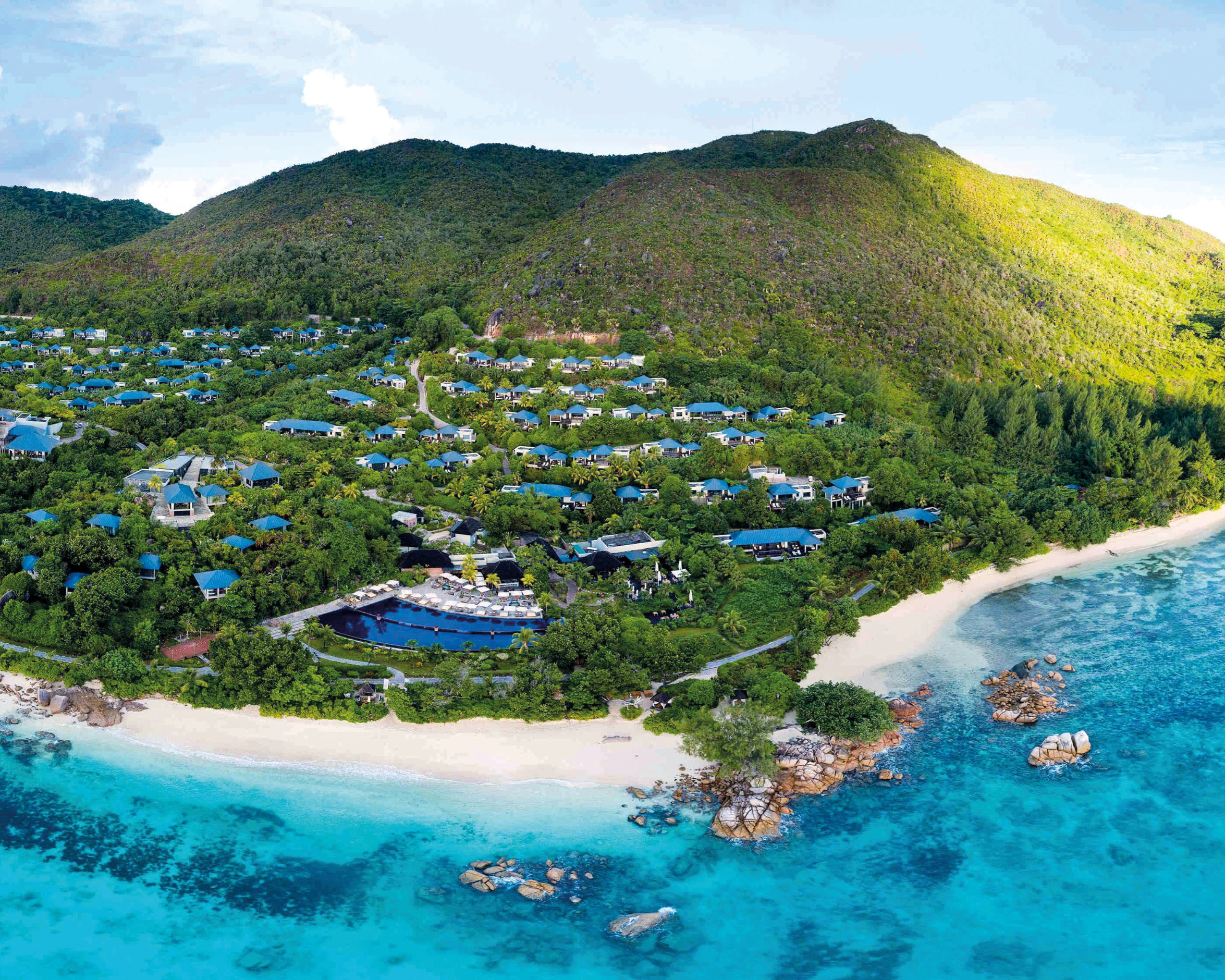
Praslin Island – coco de mer
Lying roughly 45 km northeast of Mahé, Praslin is a short 15-minute flight from Victoria. It’s a smaller, less crowded, less mountainous island, some 12 km long and 5 km wide. Its 5 000 inhabitants are scattered around the coast in a series of small unpretentious settlements. The beaches are awesome – salt-crusted edgings on a martini glass. Perhaps the island’s greatest attraction is the Vallée de Mai National Park, home to the famed bi-lobed nut of the coco de mer palm. Remarkable though the nut may be – it weighs up to 20 kg on the male palm – the palm forest is more amazing – it’s a living remnant of a prehistoric forest that existed when the Seychelles was part of continental Gondwanaland.
Must-do local fun
Getting the most out of the Seychelles means leaving the beach lounger at least a few times and venturing into the interior. Food is always a great ‘in’ to a culture and the islands have a wealth of Creole-style seafood on offer. Eating out in the Seychelles is something best done under a palm roof on the beach, next to the ocean, great for social distancing, even better for supporting local entrepreneurs. One superb little spot is the Anse Soleil Café Chez Julien, on the beach of the same name, close to the (now-derelict) Plantation Club in southern Mahé. There’s nothing fancy – just excellent food (try the octopus), a beach and a hidden bay.
And if you’re wondering how to get there, ask any local and they’ll tell you that once on a particular island, just use the bus. The regular service is used by many tourists and is cheap and fun. It’ll cost you just R4 to get from one side of an island to the other.
The Seychelles is all things to all people, despite its – admittedly deserved – reputation as a kickback beach idyll for honeymooners. The variety of culture and activities is surprising, but not difficult to partake in. Because of all things, the Seychellois are a welcoming people and it is this that makes a truly lasting impression.
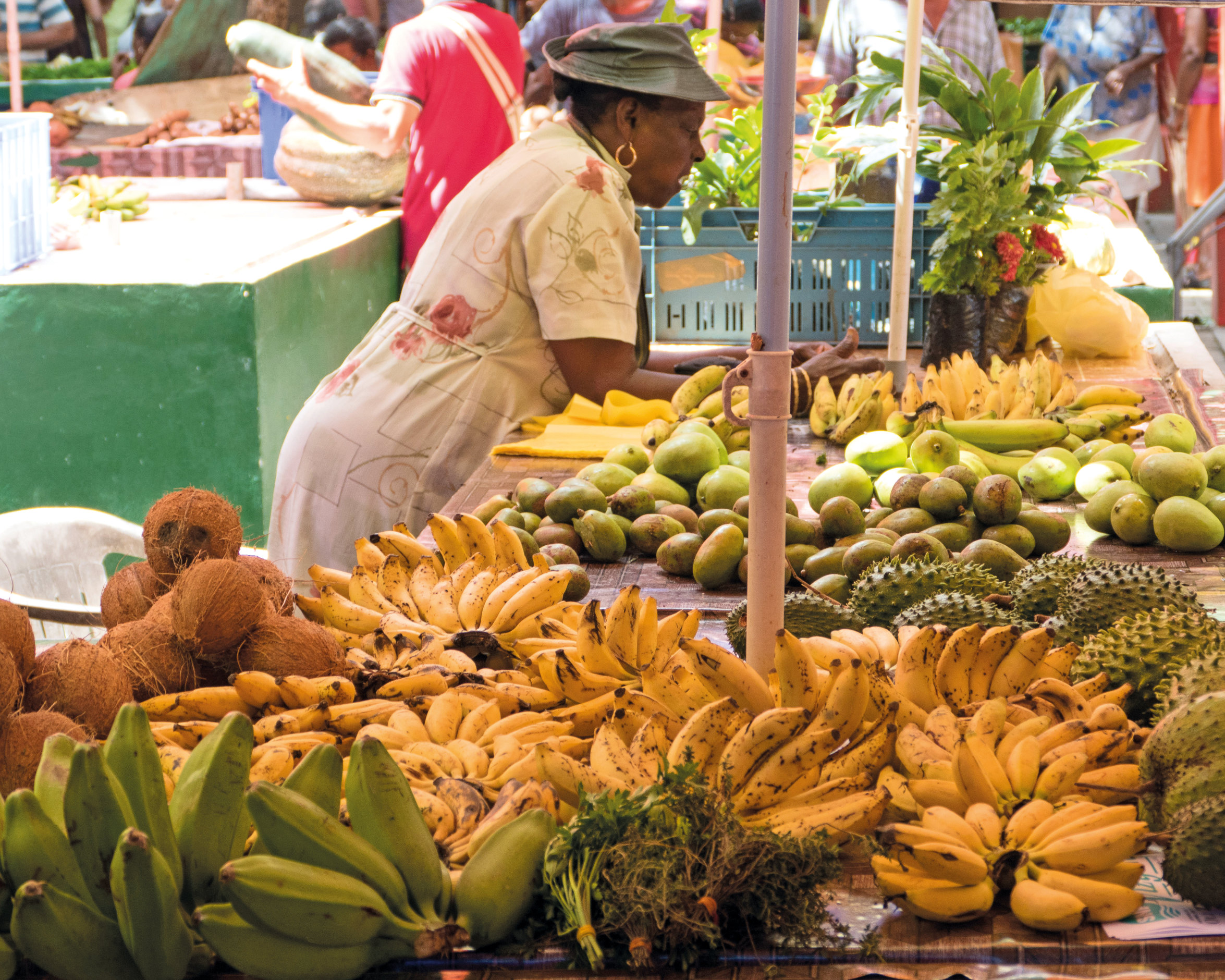
Top 5 Seychelles beaches
• Cote d’Or, north Praslin – wider than most Seychelles beaches, longer too, it’s home to a nice mix of subtly styled resorts and real Seychellois homes.
• Beau Vallon, north Mahé – the Copacabana of the Seychelles, busy (comparatively), plenty of restaurants, music, safe swimming.
• Anze Lazio, north Praslin – frequently rated as a top five beach in the Seychelles.
• Baie Lazaré, south Mahé – a good balance between secluded and accessible, it offers great snorkelling and long, romantic walks.
• Port Launay, northwest Mahé – hidden down a one-way street in the Port Launay Marine National Park. Impossibly pretty, quiet, protected, heaven on Earth.
NEED TO KNOW
Getting there: Air Seychelles flies from Johannesburg to Mahé five times a week, at a cost of approximately R6 000, return. There are frequent fly-and-stay specials, so check with the airline’s website.
airseychelles.com
Where to stay: Good value, self-catering chalets are very popular on Seychelles, as well as the expected resorts and more expensive hotels. Get a list of them at seychelles.com
How to get around: Most locals and visitors make use of the well-run bus services on the islands. Taxis are plentiful too, as are cheap inter-island ferries.

